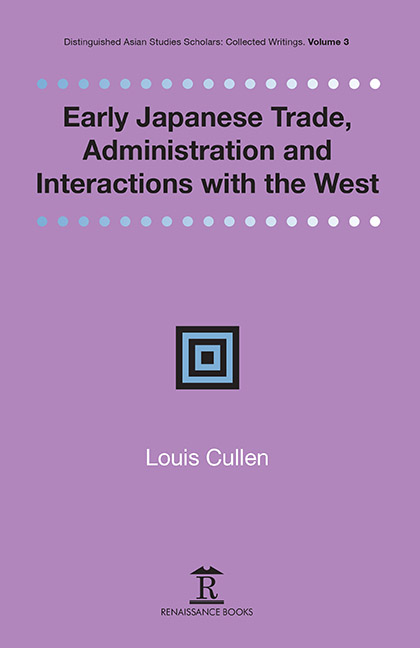1 - Sakoku, Tokugawa Policy, and the interpretation of Japanese history
Published online by Cambridge University Press: 30 April 2022
Summary
JAPANESE HISTORY POSES problems of sources, because many sources have been destroyed, and in some instances were not even preserved in the form of the originals at the time. Copying was sometimes conducted haphazardly, but in some cases, careful and regular copying into journals was carried out. Some of these journals were official, but many were personal to the office-holder, and if there was an official record it was made by further copying of the record he had retained, and was then circulated. This mode of proceeding, however, meant that there was less a centralised general record than private or semi-private ones maintained by officials and in many cases retained by them or their descendants. In some cases, there appear to have been multiple copies, as on the occasion of the Rezanov expedition (the Russian embassy which sought trade with Japan) in 1804 which absorbed Japanese attention for months: that visit still awaits full study, and the effort spent on it should be repaid by the light it throws on Japanese administrative methods and record-keeping as much as on the political story itself. Much administrative work simply took the form of copying, and all foreigners from the seventeenth century onwards who made contact in some official capacity commented on the number of note-takers and the fact that everything was noted down. This method of proceeding also accounts for the constant going back over subjects already covered, which so exasperated foreigners. The pattern is amply confirmed in surviving Japanese records: one finds in them a minute recording of everything, and, apart from the record of negotiations, they reveal a curiosity about details, some of them apparently trivial, not only with regard to ships and armaments, but to dress, tools, weapons and uniforms. Sketches, often coloured, confirm that at the time the copyists sketched as well as wrote.
The physical structure of offices needs to be taken into account. Then as now subordinate officials, as we can see from illustrations of Tokugawa-period work spaces, tended to work in a large room under the supervision of one man at its head. Moreover much of the work consisted of copying documents. In Edo Castle, the senior officials, the metsuke and kanjō bugyō, were accommodated in two separate spaces or rooms. A clear picture of how this structure worked in detail awaits the completion of further study.
- Type
- Chapter
- Information
- Publisher: Amsterdam University PressPrint publication year: 2020



